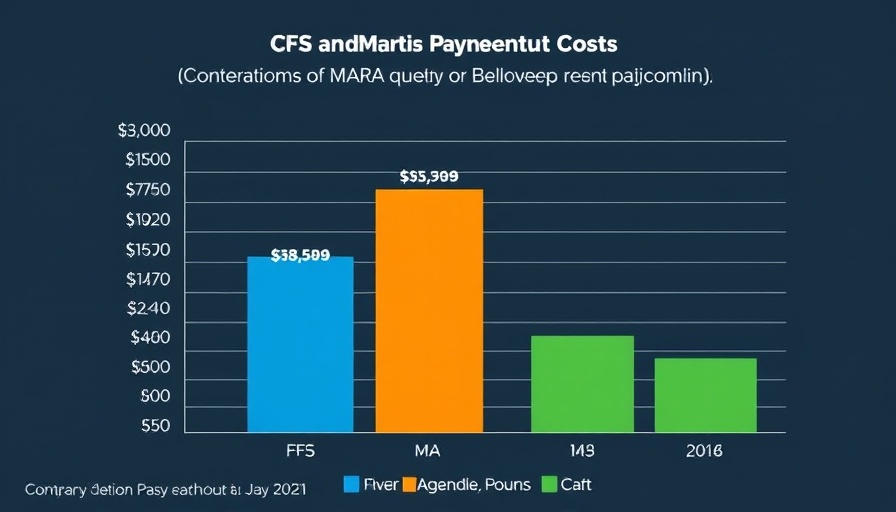
What Would a Rational DOG(gi)E Do? Examining the Future of Federal Health Spending
The transformation of DOGE from a lighthearted meme to a significant player in the federal health care spending narrative has unveiled critical insights into how government expenditures can be rationalized in health care systems. Through a comedic lens, Matthew Holt raises compelling questions regarding the efficacy of government spending on health programs, particularly at a time when American citizens face notable shifts in federal employee health benefits, drug pricing schemes, and systemic inefficiencies.
Understanding the Scale of Federal Health Care Spending
In fiscal year 2024, federal government expenditures on health care programs amounted to an impressive $1.9 trillion, encapsulating 27% of all federal outlays. A significant chunk of this funding goes to Medicare, Medicaid, and the Affordable Care Act (ACA), emphasizing how crucial these programs are for millions of American lives.
However, the challenge arises when considering the alarming trajectory of federal health spending, projected to increase by 47% over the next two decades. Such growth threatens sustainability, with Medicare facing funding shortfalls as the demographic shift toward an aging population continues. It’s imperative, therefore, to adopt a more disciplined approach shaped by data-driven analysis.
The Snares of Inefficient Health Care Administration
Holt points out one glaring misstep in the management of Federal Employees’ Health Benefits. The Office of Personnel Management (OPM) allocates funds to various health insurance providers but offers them minimal oversight. Reports reveal that ineligible members accounted for $1 billion of unnecessary expenditures in just one year. Here, a foundational step DOG(gi)E could take is implementing stringent reviews and accountability measures, allowing for both financial savings and improved service delivery.
Drug Pricing in the U.S.: A Complex Puzzle
The United States employs an intricate system for drug purchasing, where the 340B program is particularly controversial. Initially intended to assist safety-net hospitals in providing medications to lower-income patients, the program has morphed into a revenue-generating channel for bigger hospitals, undermining its original purpose. This disconnection between intention and outcome raises the need for reforms that ensure funds serve their intended demographic effectively.
With billions flowing through 340B, it’s crucial for regulators to disentangle profit motives from patient care objectives. The Federal government must engage in more rigorous negotiations with pharmaceutical companies to achieve tangible cost reductions that translate to lower prices for consumers.
Exploring Opportunities For Streamlined Spending
A rational DOG(gi)E should advocate for centralized planning of drug prices across various federal health programs. By managing outreach through comprehensible channels and enhancing negotiation power with pharmaceutical manufacturers, the government could not only save immense resources but also significantly improve healthcare accessibility for American families.
Future Predictions: A Health Care Landscape Redesigned
The trajectory of health spending points to an urgent need for a reevaluation of the healthcare system. As the costs associated with Medicare and Medicaid swell, innovative cost-saving measures must garner attention. Proposed adjustments, such as equalizing Medicare payments across various care settings, could result in billions in savings.
The influence of state policies, the negotiation of drug costs, and an emphasis on preventative care can collectively reshape the healthcare landscape. If experiments with alternative care models yield positive outcomes, they should be implemented widely across states for a more resilient system.
The Importance of Data in Reforming Federal Health Expenditures
Using accurate data to drive decisions will be pivotal as spending continues escalating. The Congressional Budget Office emphasizes how mandatory spending grants the federal government a unique operational opportunity to maintain control. Emphasis on transparent budgeting and data-driven evaluations can make systemic improvements more achievable.
Investment in technology platforms that strengthen data collection will enable healthcare administrators to derive actionable insights, streamline care, and mitigate wasteful spending. The role of public health agencies, along with dynamic health policy reform, needs to be reasserted in tackling the challenges that lie ahead.
Conclusion: The Call for Rationality in Health Care
The evolution of the DOG(gi)E narrative draws attention to broader considerations within the Federal health care system. As policymakers look for successful strategies to streamline expenditures, stakeholders must engage in open dialogues about reforming existing frameworks. An informed and proactive approach can help reclaim lost funds and ensure healthcare serves its intended purpose—providing effective and equitable care for all.
In this ongoing conversation surrounding health care efficiencies, it is crucial to prioritize policies that enhance the transparency and accountability of resource utilization. Let us strive to harness data, create collaborative dialogue, and implement grounded strategies.
 Add Row
Add Row  Add
Add 




Write A Comment